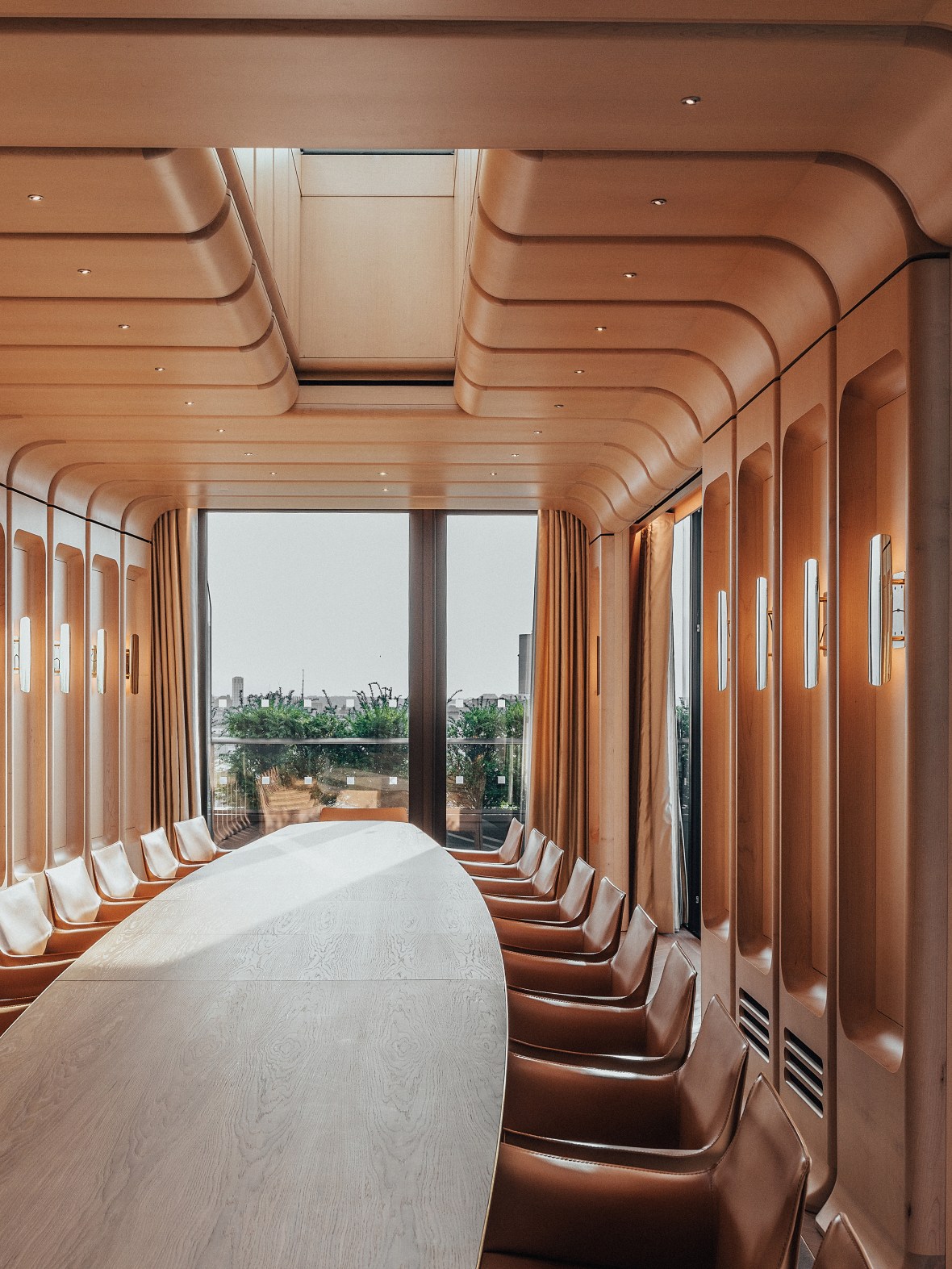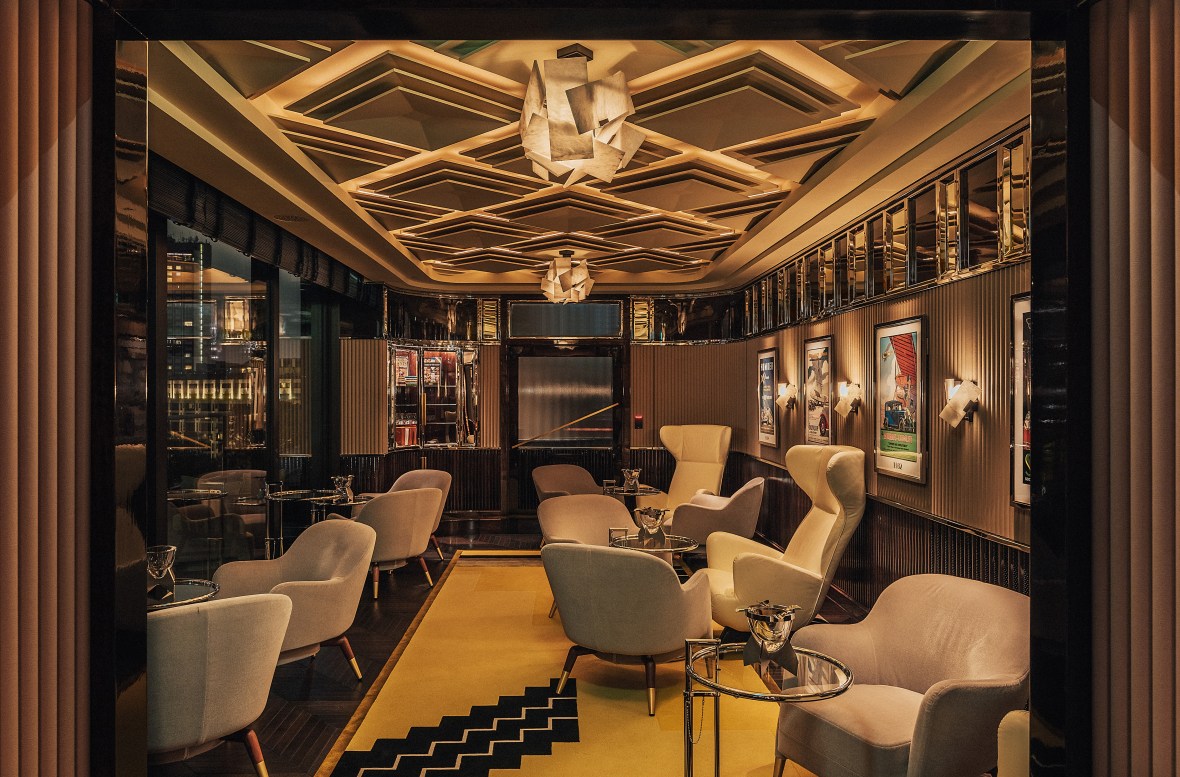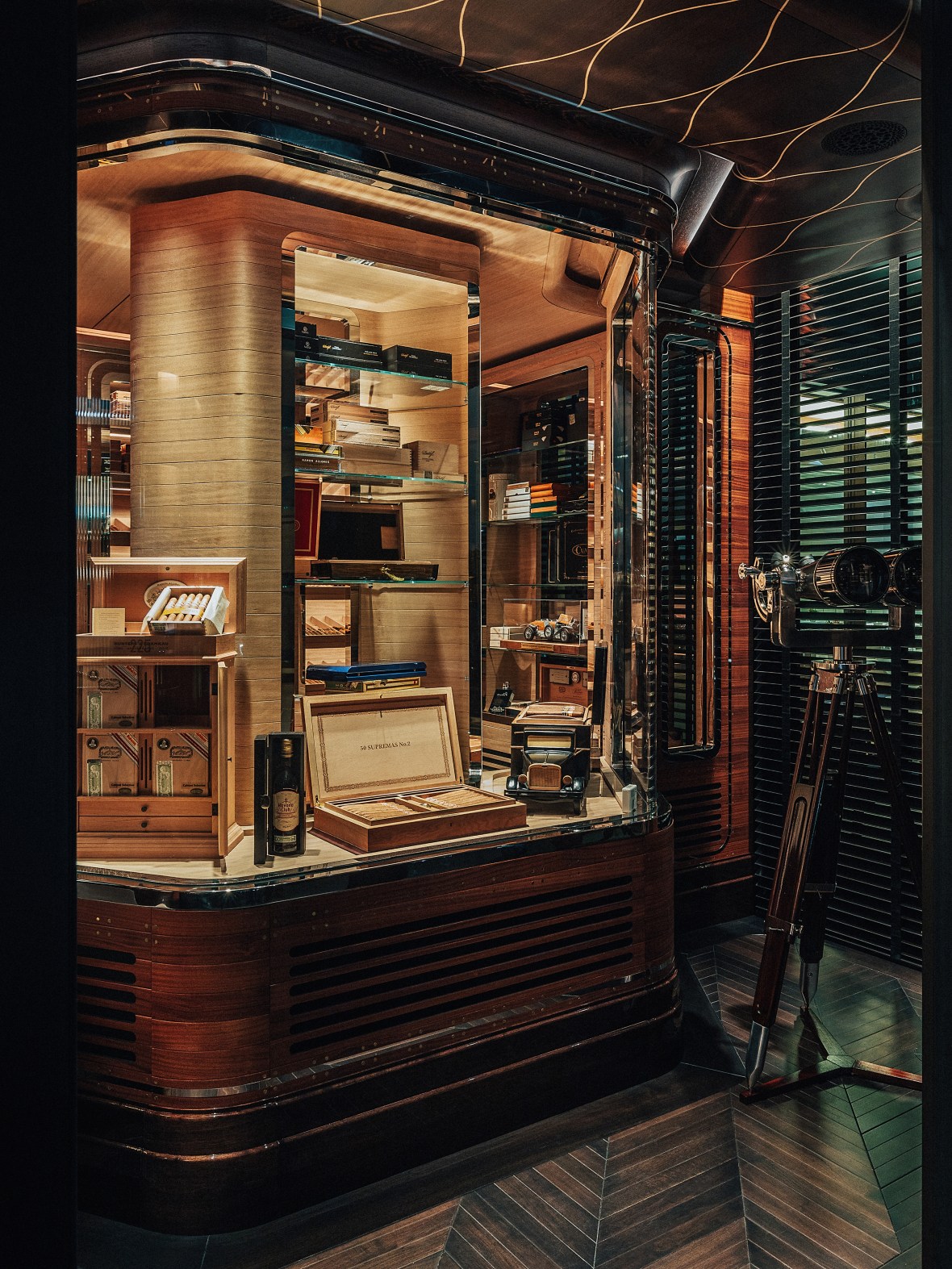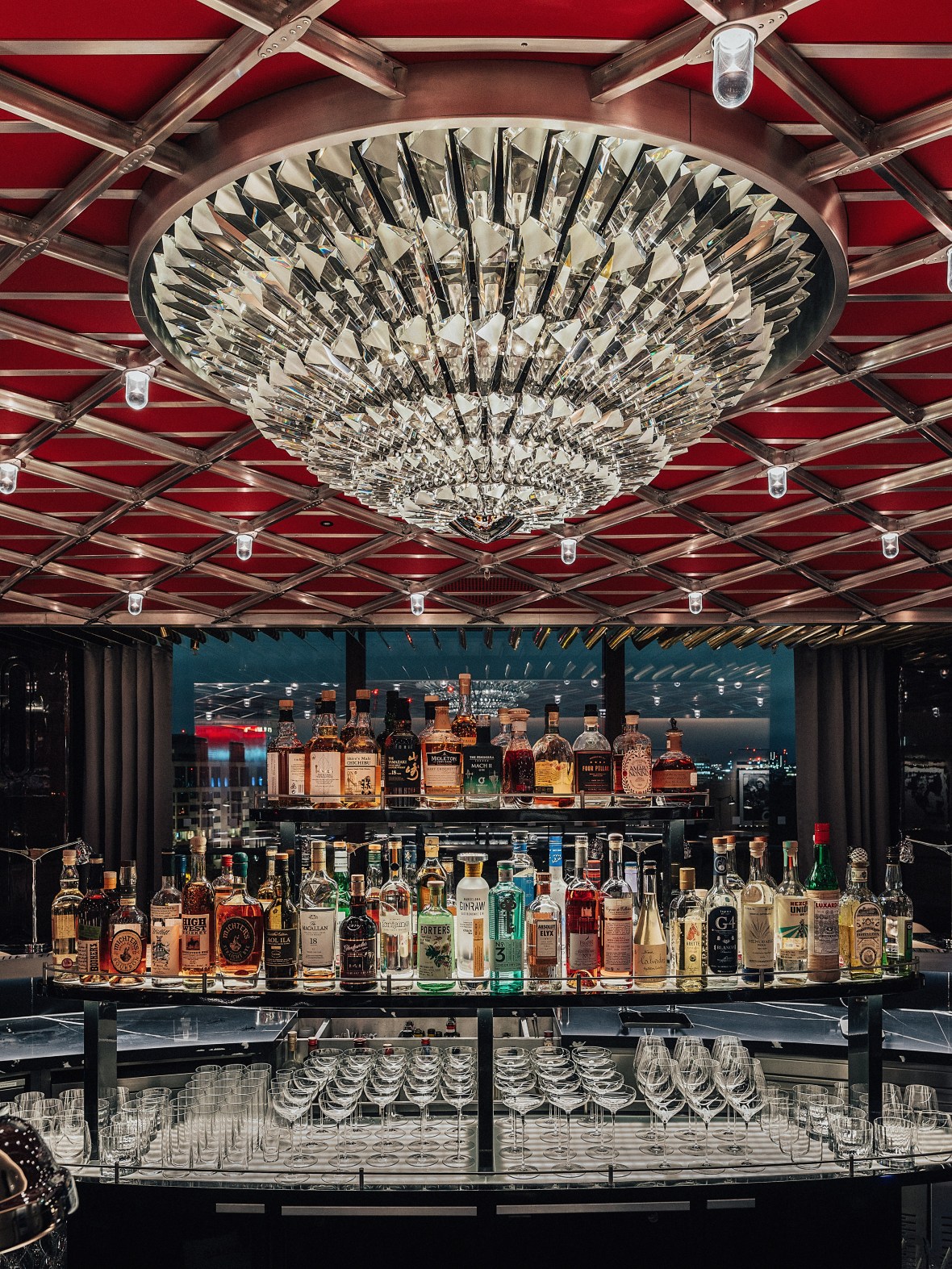
Not many hoteliers design their restaurants to appeal to petrolheads. But such is the enthusiasm of Sir Michael Kadoorie, chairman of the Peninsula Hotels, for fast men and their flying and racing machines that not only did he name the top-floor restaurant of his new £1.1 billion London hotel after Brooklands racetrack, he adorned its interior with items and images linked with the famous British circuit that opened in 1907.
The space has been conceived, from floor to ceiling, to make visitors think about glamorous means of transport. Walk through the hotel’s reception towards the lift — lined in wicker to resemble the basket of a hot-air balloon — and you’ll pass one of the Brooklands museum’s precious antique cars (for the hotel opening the Napier-Railton race car that broke speed records in the 1930s; a few weeks later a 1926 Delage 15-S-8, of which only four were built). Emerge onto the eighth floor into a circular lobby and you’re confronted with marquetry scenes depicting Brooklands’ racing history. Stroll into the bar and there are leather-upholstered banquettes that resemble the bench seats of antique cars, chrome Lucas Racing lights around the bar counter and even old-fashioned levers, like those in an antique Rolls-Royce, to get the attention of waiters.
The interiors took almost eight years to create, says David Archer, the co-founder of London-based Archer Humphryes Architects, whose projects have ranged from rebuilding the Koko nightclub to revamping hotels such as the Chiltern Firehouse and the Standard. That’s because Kadoorie, he says, wanted it to be “just right”. A tribute to the glamorous transport of the past, a comfortable place for guests to relax with a drink and a futuristic space that felt rooted in British heritage.
There is certainly no more space-age dining room in London than this, with a 14m model of Concorde hanging from the ceiling. They chose to focus on Concorde, Archer says, not only because the plane has such strong links with Brooklands, where parts of it were made, but because Kadoorie owned part of an original plane. “He phoned and said: ‘I’ve just bought the nose of Concorde, so let me know where it goes,’” Archer says.
Amid the original parts of cars and planes the architects had replicas made that were “within a millimetre of being original”, Archer says. The Concorde model, for instance, was made in Santa Barbara by Neal Feay, which transforms aluminium into items from aeronautical parts to artworks. The light fittings, inspired by the rear brake light from the Rolls-Royce Phantom, were made by Genius of the Lamp in Birmingham, which creates components for classic cars. The carpets — featuring the constellation of the stars you might have seen on a flight from London to New York on Concorde — were woven in Taipei by manufacturers used by Kadoorie’s Hong Kong Shanghai Hotels. “We used all sorts of skills to generate this project,” Archer says, “varying from a couple of people in a small shed in England to a centuries-old humidor manufacturer in Italy.”
Every bit of the detail is thought through, so the entire space — from the bar and restaurant to the lounge, private dining room and tabac — has links to transportation. The ceiling, for instance, is embellished with a basket-weave pattern once used in the fuselage of a Vickers Wellington bomber, and the bar is covered with fascias from a Rolls-Royce Silver Ghost. The main chandelier, which rotates, was made from the blades of a Concorde Rolls-Royce/Snecma Olympus 593 turbine, and in the dining room a modern, moving artwork reinterprets the patterns of air streamed behind Concorde’s engines. Even the tabac shop, lined with boxes of cigars from around the world, Archer says, was inspired by a 1914 Hispano–Suiza car they saw at the V&A.
What Brooklands is not, he insists, is the Royal Automobile Club, a traditional building full of motoring memorabilia. Rather, it’s an immersive, interactive set of rooms inspired by the beauty of vehicles and the cutting-edge technical innovation that went into making them. For those lucky enough to book a table at dusk, he says, “that’s when the space is at its most beautiful, when the sunset turns the room orange, the light bounces in and warms it with a warm glow”. To be able to see the night sky in London — and look over the gardens of Buckingham Palace — is an extra privilege. “Not everyone gets to see the moon as they eat their dinner. That’s such a treat.”
He doesn’t consider the space overly male either. “This is ultimately a party room,” he says, “so we have all the elements that make it comfortable.” A fire, rugs, deep blue velvet Molteni&C chairs and Poltrona Frau sofas, and Murano chandeliers. “It had to be somewhere that people of all ages and sizes could come and enjoy a drink and conversation.”
The space is full of vehicles that everyone loves, male or female, he adds. “Concorde inspired such awe. Women who went on it often talk of their journeys with tears in their eyes.” And a beautiful sports car, he says, “seems to have as great an appeal to the female as it does to the male, although perhaps in different ways. They have an emotional pull … So, I hope it will feel as appealing for the girls as for the boys.”





